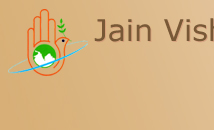Jainism is one of the oldest religions of world. It believes in a cyclical nature of universe. Thus the universe is beginning less and ending less.
The wheel of time incessantly revolves like a pendulum. In the first half circle it revolves from the descending to the ascending stage where human prosperity, happiness, and life span increases and in the second half circle it revolves from the ascending stage to the descending stage where prosperity, happiness, and life span decrease. Now we are in fifth era of the second half circle, i.e. descending time cycle.
Rishabhdev, was the first Tirthankar of this cycle of time and the last of the 24 Tirthankaras was Lord Mahavir who lived between 599 and 527 B.C.E. Tirthankar means Maker of the four fold congregation consists of monks, nuns, lay men and lay women.
In ancient times Jainism was known by many names such as the religion of Shraman, Nirgantha. Later on it has been known as Jain Dharma.
Meaning of Jina
Literally Jina means a conqueror that is one who has conquered the worldly passions like, attachment, hatred, desire, anger, greed, and pride by one's own personal efforts. Jina is a human being and not a supernatural being or an incarnation of an almighty God. All human beings have the potential to become a Jina.
The follower of Jina is known as Jain and the religion propounded by Jina is known as Jain Religion.
Objective of Jain Religion
The objective of Jainism is to strive for Moksha or Liberation from unending cycles of Birth and Death. One who is liberated is called as Siddha. A Siddha is a soul which has achieved its original state of infinite knowledge, perception, bliss and power. That is purified state of soul. Every Jiva (living being) has the potential of becoming a Siddha and they are known as God.
Jainism does not believe in God as the creator of universe. God is a liberated soul (Siddha) who has attained Moksha, a role model to lead a path towards salvation. Every human being and every living being has the potential to attain Moksha and thus become God.
Jainism says that the future of a man is in his own hands. Tireless and consistent efforts can bring the bright future and the purified state of soul.
Jain rituals, religious practices and beliefs are beneficial not only from spiritual perspective, but from a scientific perspective too. Jainism is not only a religion but it is a way of life.
The Three Paths of Liberation
Every living being from eternity due to its ignorance is in bondage of karmic atoms, accumulated by its own actions of body, mind and speech. One can get rid of karma and attain Moksha by simultaneously following the path of Right faith (Samyak Darshan), Right knowledge (Samyak Gyan) and Right Conduct(Samyak Charitra).
Proper knowledge of six universal substances (six Dravyas) and the nine fundamental truths (nine Tattvas) is called Right knowledge.
True faith in Right knowledge is called right faith.
The Right conduct includes non-voilence, truthfulness, non-stealing, chastity, non-possession, compassion, penance and meditation.
The Six Universal Substances are:
Soul or Conscciousness |
Jiva |
Living substance |
Matter |
Pudgal |
Nonliving substance |
Medium of motion |
Dharma |
Nonliving substance |
Medium of rest |
Adharma |
Nonliving substance |
Space |
Akas |
Nonliving substance |
Time |
Kala or Samay |
Nonliving substance |
The Nine Tattvas (realities) are:
Jiva |
Soul or living being (Consciousness |
Ajiva |
Non-living substances |
Punya |
Virtue |
Papa |
Sin |
Ashrava |
Cause of the influx of karma |
Samvara |
Stoppage of the influx of karma |
Nirjara |
Exhaustion of the accumulated karma |
Bandha |
Bondage of karma |
Moksha |
Total liberation from karma |
The nine tattvas are the most important subject of Jain Philosophy. It deals with the theory of karma, which provides the basis for the path of liberation. Without the proper knowledge of these tattvas a person can not progress spiritually.
Ethical Code: Five great vows.
The practical way of Right knowledge and Right faith is Right conduct. The following great vows are observed through out the life. This is for those who want to lead an ascetic life.
Ahimsa (Non-violence) |
Not to cause harm to any living beings |
Satya (Truth) |
To speak the harmless truth only |
Astey (Non-stealing) |
Not to take anything not properly given |
Brahmachrya(Celibacy) |
Not to indulge in sensual pleasure |
Aprigraha (Non-possession) |
Complete detachment from people, places, and material things |
Above all it is a religion of Amity, Compassion and Love. At certain extent these rules can be followed in daily life by every body to avoid doing harm to living things and freeing oneself from attachment and other impure attitudes and thoughts.
Spiritual Practices and Ways of Worship
The sacred prayer is the Namokar Mantra in which homage is paid to the five worshipful personalities:
| Namo Arihantanam |
Arihanta (enlightened human beings) |
| Namo Siddhanam |
Siddha (liberated souls) |
| Namo Ayariyanam |
Acharya (head of Jain congregation) |
| Namo Uvajjhayanam |
Upadhyaya (ascetic teachers) |
| Namo loe savva sahunam |
Sadhu (all ascetics) |
Six essential rites:
Jainism advocates six essential rites to be performed daily by its followers.
Samayik (Meditation) |
To remain calm and undisturbed for 48 minutes. |
Chaturvinshati Stava |
To pray and appreciate the qualities of 24 Tirthankaras |
Vandana |
To respect Ascetics |
Pratikraman |
To repent and confess past bad thoughts and deeds. |
Kayotsarga |
Non attachement to the body. |
Pratyakhyana |
Renouncing certain activities for some time to discipline one’s self |
Jain Philosophy
Jainism divides the whole universe into two main divisions viz., sentient beings (Chetana, also called Jiva or Soul) and non-sentient things (Jada, also called Ajiva or non-soul). Soul is that element which thinks, knows and feels. It is the divine element in the living being. The true nature of the soul is Infinite knowledge, Infinite faith, Infinite bliss and Infinite power. The soul is undergoing evolution and involution, so long as it is subject to transmigration. Whatever is not soul is non-soul (Ajiva).
The combination of the Jiva and the Ajiva causes all diversities in this universe. Their interaction or interplay is the cause of the world-process or evolution. When the soul is stripped of all its Ajiva bondage, it becomes pure and attains its ultimate destination that is Moksha (salvation).
Jain Beliefs
Jain Cosmology
Jain believe that the universe and everything in it is eternal. Nothing that now exists was ever created, nor will it be destroyed. According to Jainism, the Universe consists of infinite amount of Jiva'(life force or souls) and Ajivas (non living things), and the design resembles a man standing with his arms bent while resting his hands on his waist.
God
Jainism believes in God, but not as a creator, destroyer or protector. The God of Jain religion is that soul which is completely pure and free from all the karmas. The Jain idea of Godhood is the perfected Soul (Siddha), the liberated soul (Mukta). The Jains worship these liberated souls who have destroyed all Karmas and attained salvation, as their God. Every soul is potentially omniscient Thus each and every soul has the ability to become God. The only thing is without sticking with faith; endeavor has to be taken in a right way.
Karma
Karmas are the derivatives of karman particles. Karman particles are non-living matter scattered all around us and all over the universe. They are very fine particles that cannot be seen even with a microscope. A cluster of innumerable karman particles is called Karman Vargana. When you act with passions like attachment, anger, greed, ego, or deceitfulness, Karman Varganas are attracted towards your soul. Whenever we think, speak, or act, Karman Varganas around us are attracted to our souls are called karmas.
At the time of bondage of karmas to the soul, four characteristics of karmas are decided. They are-
- Prakriti (nature)
- Pradesh (quantity)
- Sthiti (duration)
- Anubhag (intensity)
The nature and quantity of karmas depend on the vigor of the activities, while the duration and intensity of karmas depend upon the intensity of the desires behind the activities.
There are eight types of karmas. Depending upon your activities, you can accumulate one or more of these eight karmas -
- Jnanavarniya - Knowledge-Obscuring Karma
- Darshanavarniya - Perception-Obscuring Karma
- Antaraya - Obstructive Karma
- Mohniya - Deluding Karma
- Nam - Body-determining Karma
- Gotra - Status-determining Karma
- Vedniya - Feeling-Producing Karma
- Ayushya - Age-Determining Karma
These karmas are grouped into two categories - Ghati Karmas (destructive) and Aghati Karmas (non-destructive). Ghati Karmas destroy the true nature of the soul. Aghati Karmas do not destroy the nature of the soul, but affect the body in which the soul resides. The first four types of karmas are Ghati karmas, and last four are aghati karmas.
Reincarnation
The Jains believe in reincarnation. The doctrine of reincarnation alone can explain the inequality seen in the world. Why is one man born rich and the other poor? Why is one man healthy and strong, and another man weak and unhealthy? Why one man lives for 30 years, and another for 85 years? Why one man is a king and another a labourer in the field? What is the cause of this apparent injustice? Karma. Good Karmas give good birth. Evil Karmas give rise to low births. The doctrine of reincarnation is another grand doctrine of the Jain philosophy. It is the companion doctrine of Doctrine of Karma.


